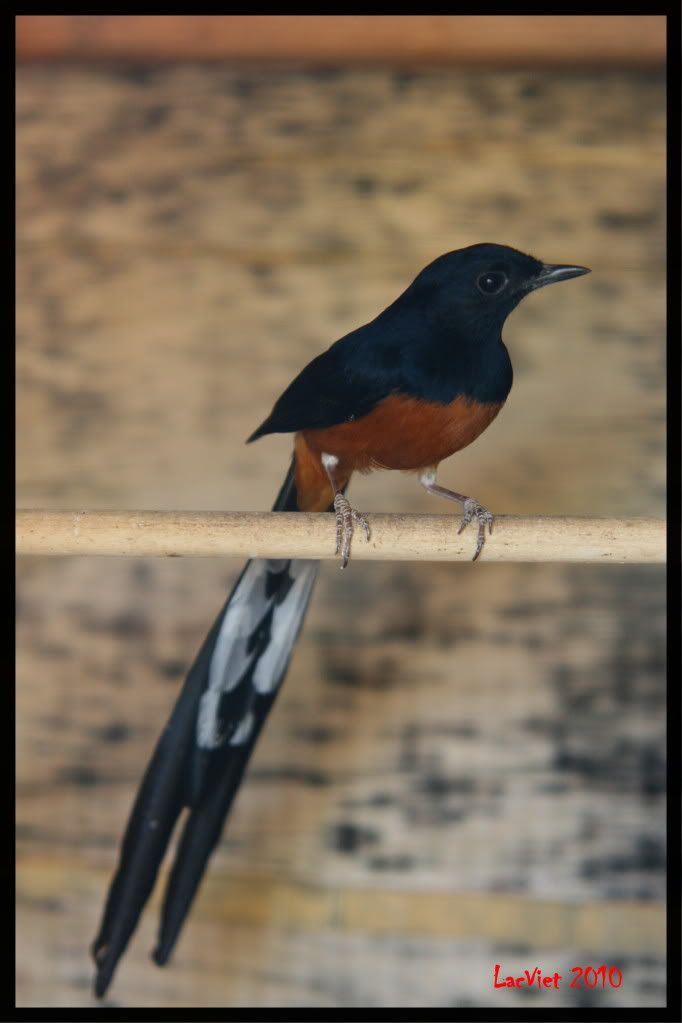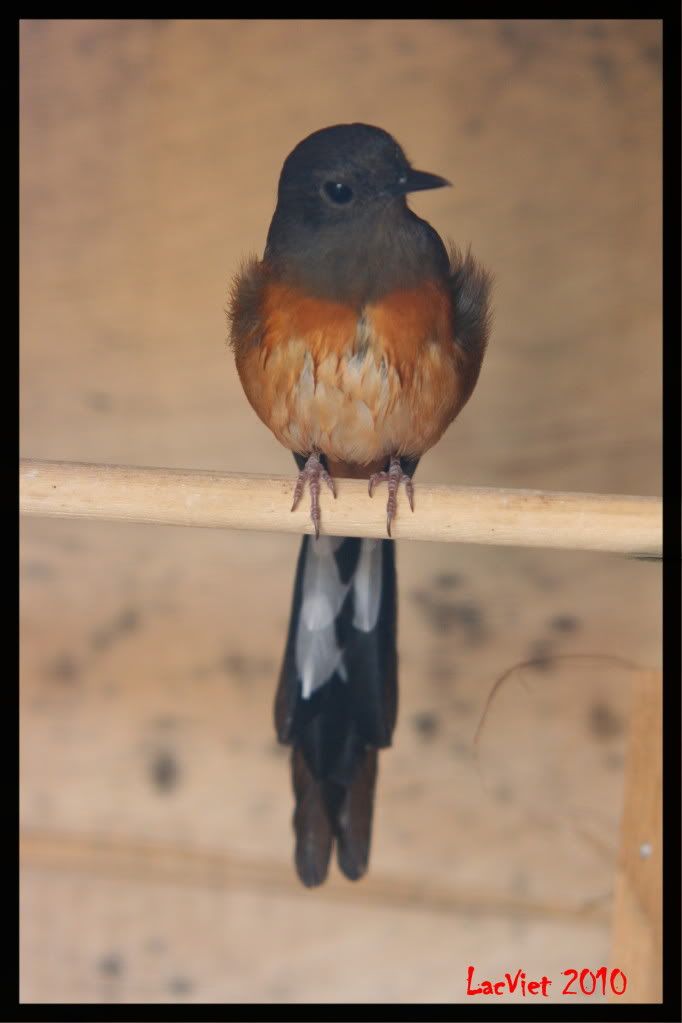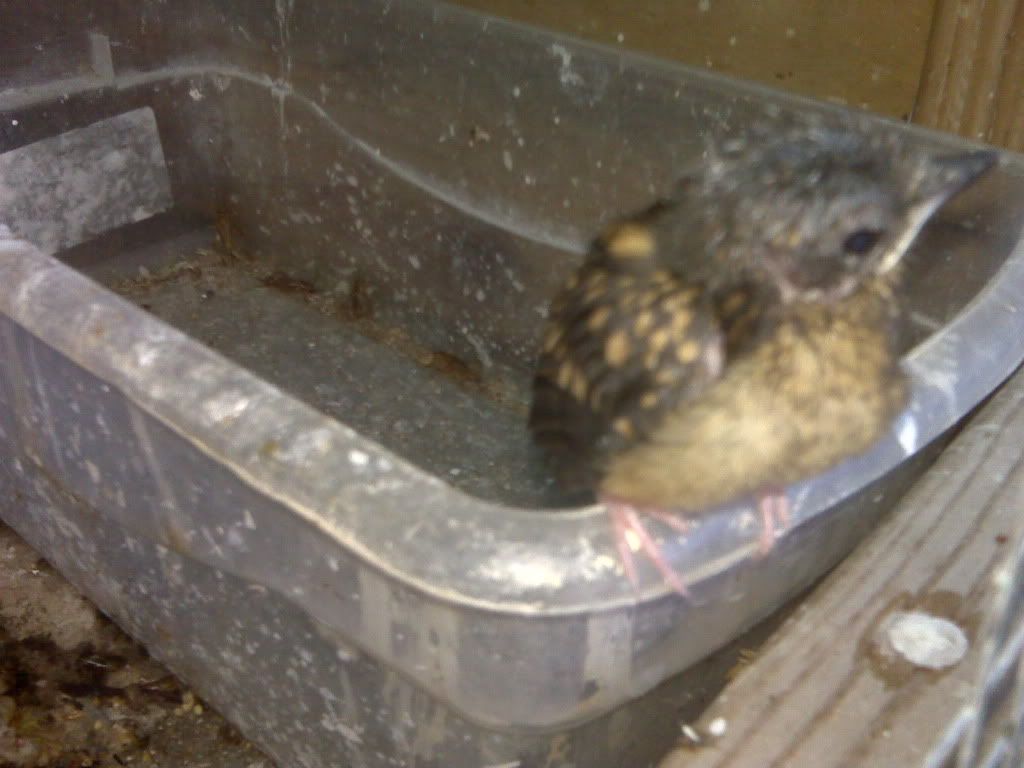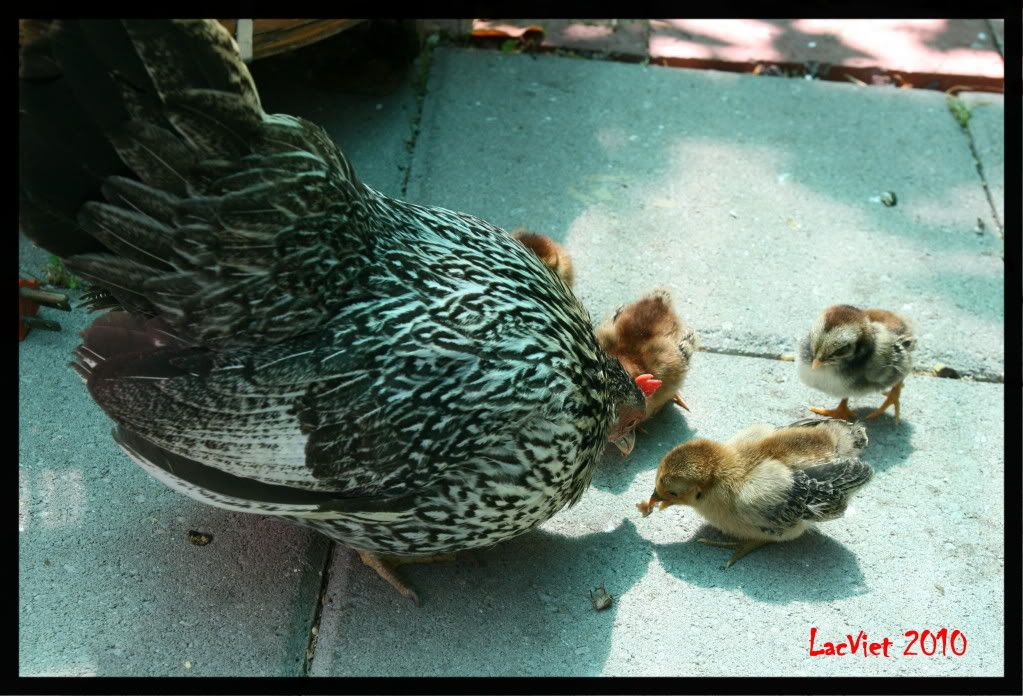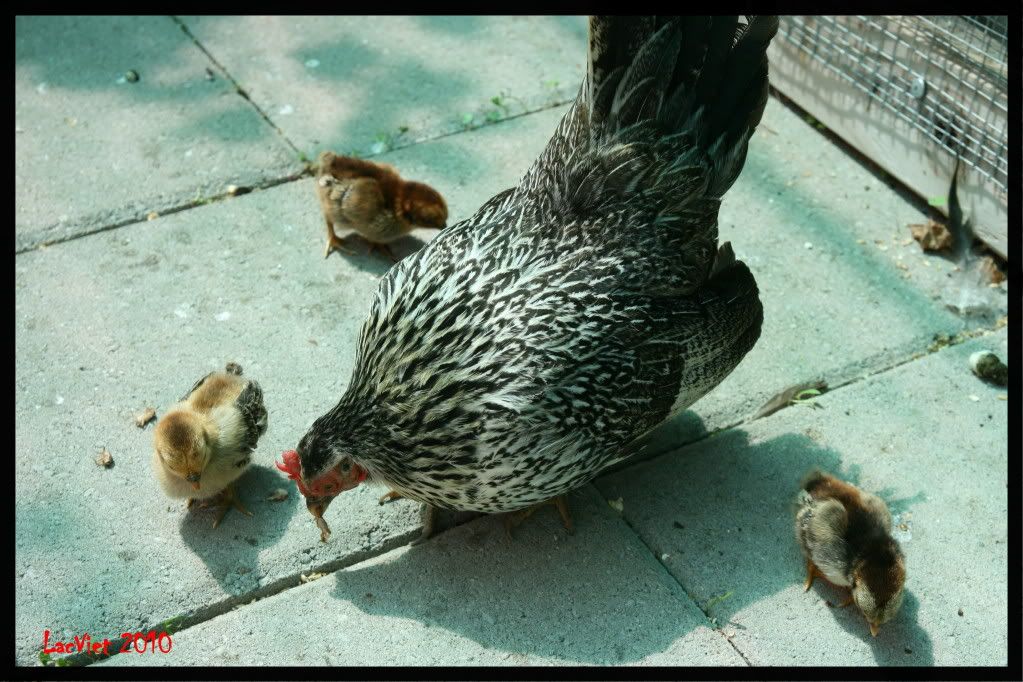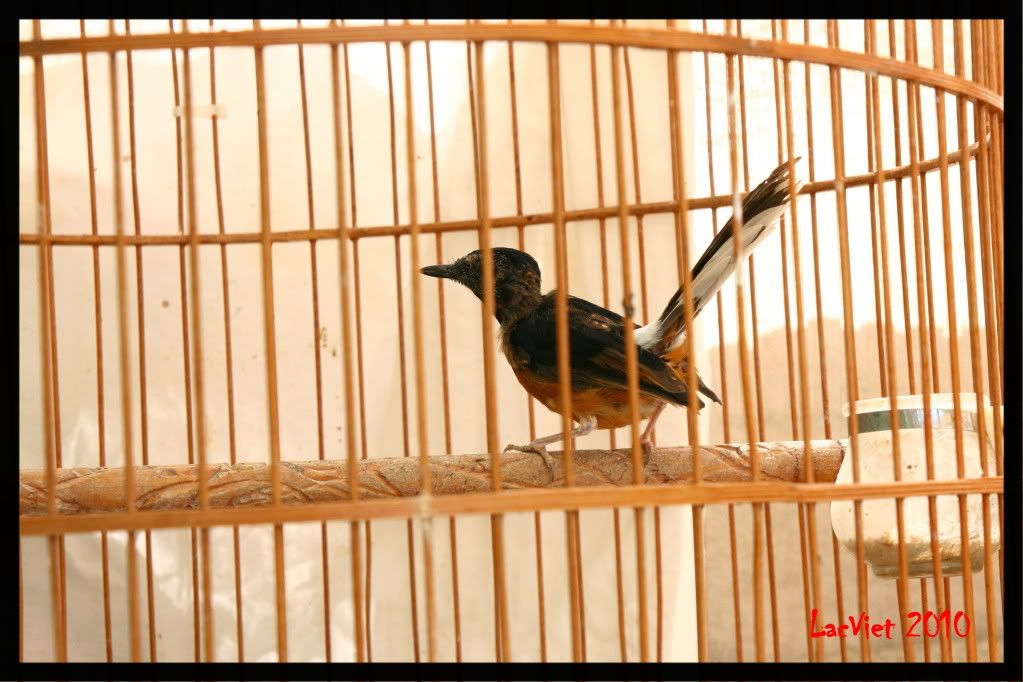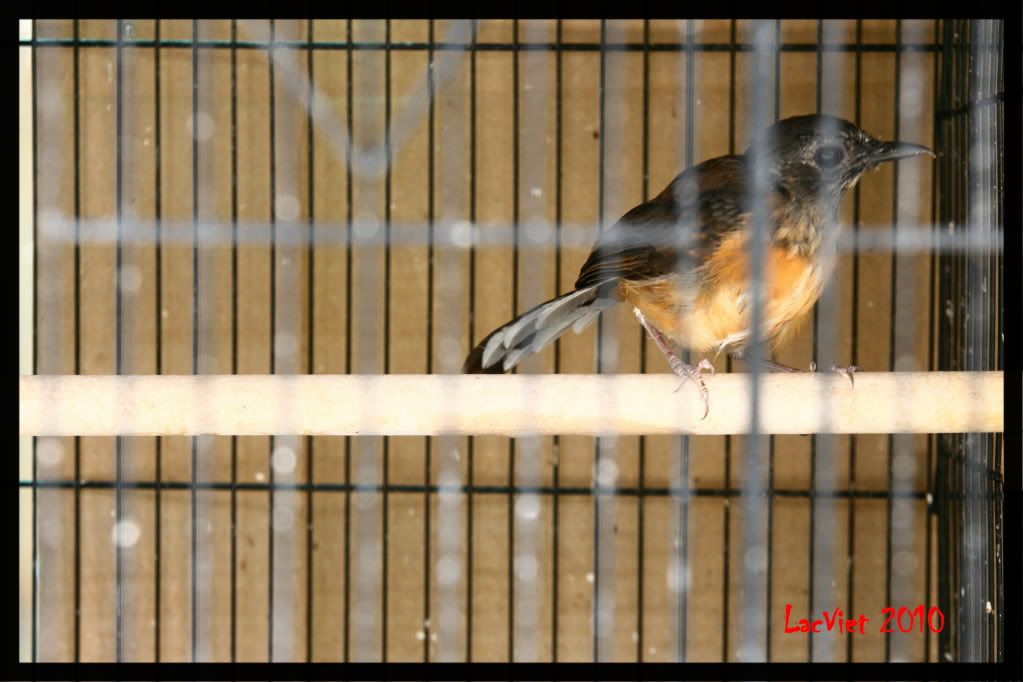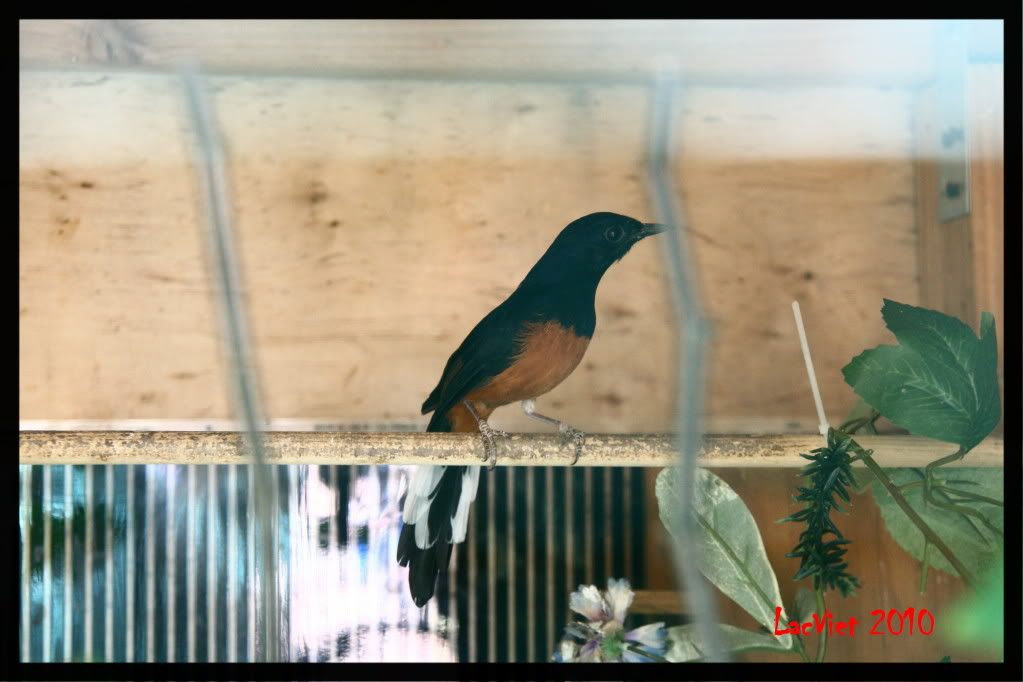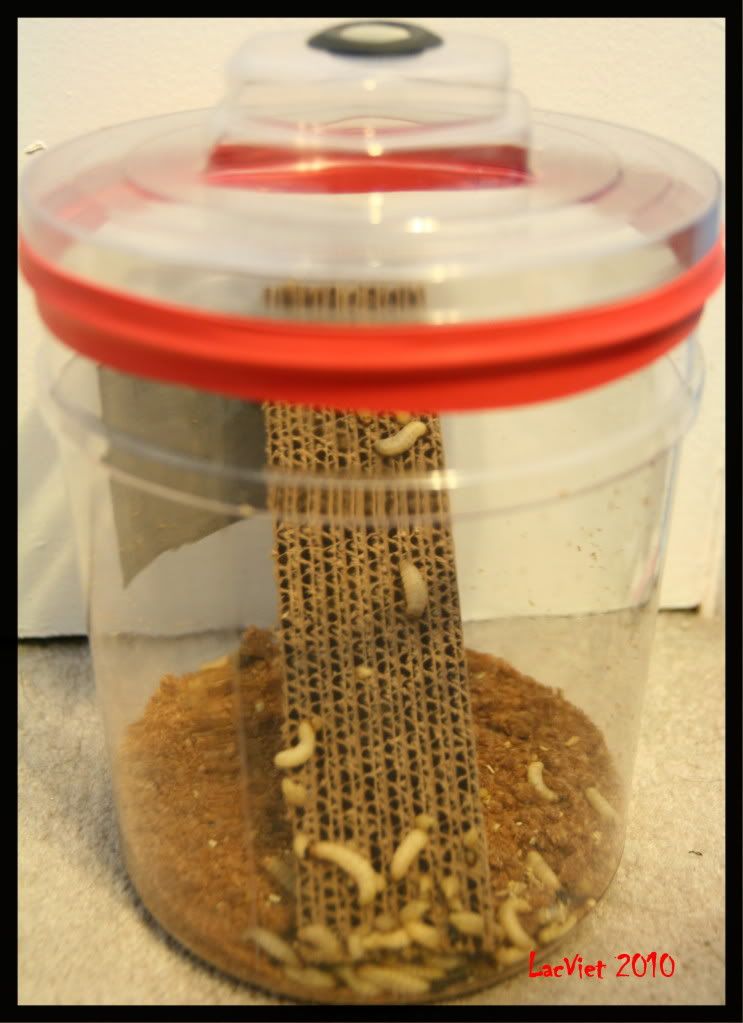Both of them is almost or just finish their first molt
Male 6 months old
Female, also around 6 months old
This blog is a repository of information on the White-rumped Shama (Copsychus malabaricus) including breeding information, and other songbirds/pets that I keep from time to time. I can be contacted at lacvietcrct@gmail.com.
Saturday, November 13, 2010
Thursday, November 4, 2010
Tuesday, November 2, 2010
Summary of the 2010 season
This season overall is a good year for me as I am able to have a pair of young chick that have the same or might be better than their parents in term of body shape and tail length. Compare to my friends and everyone else who breeds white rumped shama in the world, my birds are just normal with not thing special but to me they are the best breeding stock I can have at the moment. The best male I have had 8.5in in tail length at his 2nd year. After this molting season, I hope he can attain 9in in tail length. The best female has tail length at 5in. I hope this pair will be the foundation for breeding longer tail shama.
I have lots of babies this year, but also lost quite a few babies starting around mid toward the end of season due to possible virus infected cricket stock that happened here in the US.
I lost one baby male chick that have lots of potential due to predator (hawk).
I also lost the first female shama that produced 7 clutches of eggs two year in a row with lots of babies. Her death is due to my carelessness and sudden cold temperature/ heavy rain right around when she began to molt.
There are only two of the four chicks of the last clutch of the season survive until now. It will be another month or so before they begin to enter molting process.
All my birds are nearly finish or just finish their molting cycle. With the improvement in heat lamp inside each aviary and better protection from rain and predators, I hope next year I won't have any mishap like this year again.
I have lots of babies this year, but also lost quite a few babies starting around mid toward the end of season due to possible virus infected cricket stock that happened here in the US.
I lost one baby male chick that have lots of potential due to predator (hawk).
I also lost the first female shama that produced 7 clutches of eggs two year in a row with lots of babies. Her death is due to my carelessness and sudden cold temperature/ heavy rain right around when she began to molt.
There are only two of the four chicks of the last clutch of the season survive until now. It will be another month or so before they begin to enter molting process.
All my birds are nearly finish or just finish their molting cycle. With the improvement in heat lamp inside each aviary and better protection from rain and predators, I hope next year I won't have any mishap like this year again.
Wednesday, September 29, 2010
Saturday, September 25, 2010
Fall begins yet they are still breeding
Fall season official starts few days ago and to my surprise I recently found out that one of my breeding shama pair has few chicks in their nest. For the last two weeks, I think the breeding season is over and with busy schedule, I didn't watch the birds much except come out to feed and change water. I noticed few empty egg shells on the aviary floor last week but just think they are from previous clutch and the bird just moving them around. Few days ago, I start to hear the chick call and the parents bring food to the nest. So excited! The parents starts to show sign of molting yet still be a dedicate parents and feed their chicks constantly. I love keeping White-rumped shama! :)
Sunday, September 12, 2010
Saturday, September 11, 2010
Another breeding season is end. Birds are molting...
I think the breeding season here in the US is ended already or about to end in just few more weeks. One of the adult male shama is in the molting process. The other shama pairs are still singing with no sign of molting yet. One pair seems to still incubate some eggs. Most of the chicks born this year is in the molting process right now.
Male #1
Female #1
Female #2
Male #2
Male #1
Female #1
Female #2
Male #2
Tuesday, August 24, 2010
Earthworm, another additional food source
Earthworm that I found in my backyard during digging the soil can be an additional food source for the shama thrush. I know these earthworms are safe to feed the birds because I do not spray any insecticide/ or any harm chemical in my yard. All the birds are eating the earthworms and even feed to their chicks if given plenty. My backyard doesn't big enough to have unlimited supply of earthworms so I consider feeding earthworms as treat food, not a staple food that can be feed everyday.
First time raising waxworm for bird
This is the breeding waxworm kit that I bought from the internet a while ago but haven't have a chance to set up until now. The kit contains a clear plastic container with lid, food for waxworm, and egg laying material. The lid have small screen mesh on top to allow air exchange. Egg laying material is just like a carton box that cut and glue to resemble a bee nest. Waxworm when mature will turn to a moth and lay eggs inside bee nest so basically anything that have multiple of small holes that the moth can lay eggs into can be use. As for the food, I have to buy the food as I don't know the entire contents of it but I know it has honeybee since the waxworm feed on wax/honeybee in nature.
If you want to read more on how to raise waxworm, you can read this post that I posted a whild back: http://lacvietchoelua.blogspot.com/2010/01/breeding-wax-worm-another-live-food-for.html as it has links to where to purchase a breeding kit as well as article on breeding/raising them.
If you want to read more on how to raise waxworm, you can read this post that I posted a whild back: http://lacvietchoelua.blogspot.com/2010/01/breeding-wax-worm-another-live-food-for.html as it has links to where to purchase a breeding kit as well as article on breeding/raising them.
Subscribe to:
Posts (Atom)

